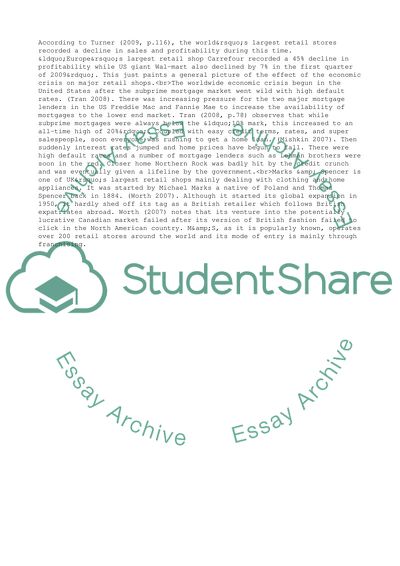Cite this document
(Motivation at Marks and Spencers Case Study Example | Topics and Well Written Essays - 2500 words, n.d.)
Motivation at Marks and Spencers Case Study Example | Topics and Well Written Essays - 2500 words. Retrieved from https://studentshare.org/business/1729951-how-the-economic-crisis-has-effected-motivation-at-marks-and-spencers
Motivation at Marks and Spencers Case Study Example | Topics and Well Written Essays - 2500 words. Retrieved from https://studentshare.org/business/1729951-how-the-economic-crisis-has-effected-motivation-at-marks-and-spencers
(Motivation at Marks and Spencers Case Study Example | Topics and Well Written Essays - 2500 Words)
Motivation at Marks and Spencers Case Study Example | Topics and Well Written Essays - 2500 Words. https://studentshare.org/business/1729951-how-the-economic-crisis-has-effected-motivation-at-marks-and-spencers.
Motivation at Marks and Spencers Case Study Example | Topics and Well Written Essays - 2500 Words. https://studentshare.org/business/1729951-how-the-economic-crisis-has-effected-motivation-at-marks-and-spencers.
“Motivation at Marks and Spencers Case Study Example | Topics and Well Written Essays - 2500 Words”, n.d. https://studentshare.org/business/1729951-how-the-economic-crisis-has-effected-motivation-at-marks-and-spencers.


